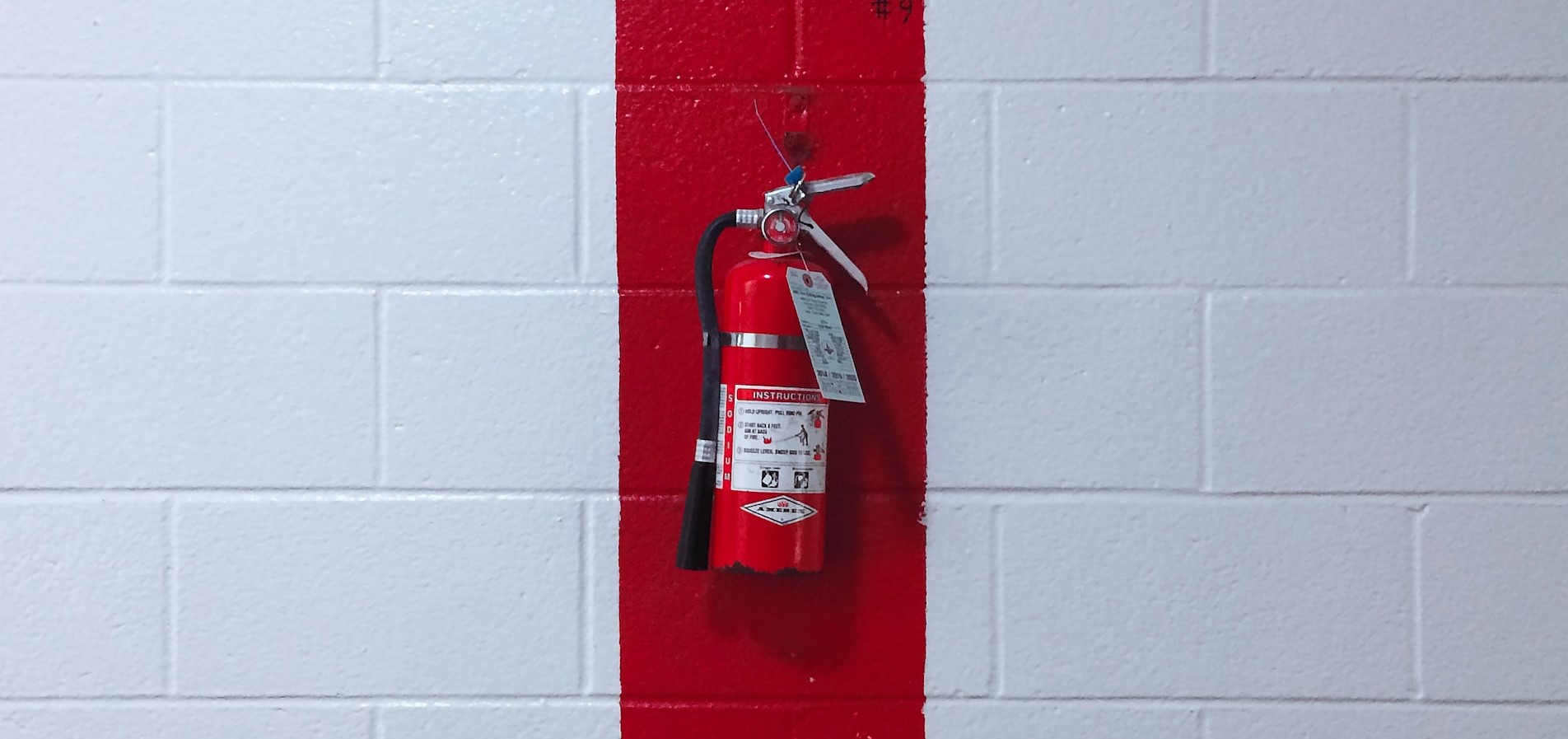Law school taught you how to handle legal conflicts, but perhaps it’s time to learn a little more about other kinds of conflict resolution. Legal clients are often under a lot of stress. Learning to de-escalate a tense situation will serve you well in your career and life.
Some areas of law are particularly likely to produce high-stress situations.
If you work as a divorce lawyer, for example, there’s a good chance you’ll see an occasional argument between clients. Other practice areas are less prone to this kind of conflict.
However, no matter your practice area, there’s always a chance that you’ll find yourself in an emotionally charged situation.
In any case, learning to de-escalate a potentially explosive situation is a smart move. Hopefully, you’ll never need to apply these skills…but if you do, you’ll be very glad you learned how.
How to recognize a volatile situation
The first step to de-escalate is to recognize when someone is about to lose their cool. It’s easier to respond before the person starts showing dangerous behavior.
Here are some of the top things to keep in mind:
#1: Stay aware of your surroundings
You generally know when you’re involved in a potentially volatile situation.
Maybe you’re walking into a mediation between parties that loathe one another. Or perhaps the parties have just received a ruling on a very contentious motion.
In situations where emotions are already running high, you need to stay on alert when the potential for an outburst or violence is present.
That means staying present, not looking down at your phone or computer constantly, and keeping an eye on the individual(s) most likely to blow their tops.
Also, keep an eye on other aggravating factors that might make the situation worse. For instance, if there’s someone loudly gossiping on their cell phone right outside the office door while you’re trying to manage a tough deposition, you might ask that chatty person to take their conversation somewhere else.
#2: Watch for aggressive body language
In most situations, a person who is about to become aggressive will have several “tells” signaling that they’re about to lose their temper.
In fact, many signs of aggression are universal among humans. They include:
- Rapid body movements (e.g., bouncing knees or tapping fingers on the table)
- Exaggerated exhales
- Frowning or a furrowed brow
- Facial blushing
- Loud voice
- Clenched fists or pointing
- Abrupt gestures such as standing suddenly or waving arms expressively
If you see any of these behaviors in someone you know is at risk for becoming aggressive, it’s probably time to de-escalate.
As an important side note, if you notice yourself beginning to exhibit these behaviors, you know that you have to work on de-escalating your own potential aggressions by walking away from the situation, breathing deeply, and asking for a break until you regain your composure.
#3: Use your ensemble perception
Sometimes, it’s not one person you need to worry about; it’s a whole group of people.
In those cases, it’s important to get in touch with what scientists call ensemble perception.
You’ve probably used this skill before without even realizing it. It is that sense you get when you walk into a room and groups of people are giving off collective energies.
For example, if you see a group of people joking and laughing at a party, you will automatically perceive that they’re in a good mood without having to analyze the body language of each individual member of the group. If you’re watching a live presentation and the audience is highly engaged, you’ll feel that energy.
The same goes for aggressive behavior. You’ll know if a group of people are collectively angry, aggressive, or potentially violent.
In these situations, monitor your own responses carefully. It may be appropriate to point out the situation to your client and counsel them to take a deep breath, release some tension, and focus on staying calm.
How to de-escalate a tense situation
So, now that you know how to spot potentially aggressive people, how can you bring them back down to earth?
To start with, your de-escalation strategies depend, in part, on what aggressive body language you’re witnessing and how far the tensions have risen.
It’s always best to start using de-escalation techniques as soon as you recognize that there’s potential for tempers to flare. The sooner you act to calm the situation, the more likely you are to avoid a shouting match or worse.
Different people respond to different strategies. It’s a good idea to learn multiple approaches so that you have plenty of effective tools available.
The techniques we list here tend to be effective in a wide variety of situations.
#1: Pay attention to mirroring
Mirroring is a natural tendency to match the tone, body language, and gestures of people with whom you’re speaking. We all do it without thinking.
If you notice someone furrowing their brow and clenching their fists, it is important not to mirror that behavior. Displaying similar body language will amplify the other person’s emotional response.
Instead, use mirroring to your advantage and try to get them to match you.
Intentionally relax your posture, keep your facial expressions calm, and make sure that your voice patterns are even and relaxed. Breathe deeply and uncross your arms and legs. Try to embody the feeling that everything is cool and controlled.
This is a good early response to an escalating situation, and if you start early enough, it may be all you need to get things back on even ground.
However, if you don’t consciously notice the rising tensions until things have progressed, it’s still important to check your body language and start projecting calm. You won’t be effective at easing tension if you mirror the aggressive mannerisms in the room.
#2: Watch out for fight-or-flight body language
What do you do if someone is trying to engage you in an argument or fight?
If someone is about to be confrontational, they’re more likely to carry through with it if a perceived opponent appears “ready for a fight.”
People project that readiness when they either puff up (i.e., make themselves bigger) or cower in a defensive posture. This body language is related to your fight-or-flight response.
If someone is getting confrontational with you, try approaching them in a standing (but not exaggerated) position with palms facing upward. If your arms are crossed, uncross them. This signals that you are looking for cooperation, not conflict.
Look back at the body language cues we talked about in step 1 and do your best to project comfort and ease. Try to use mirroring to your advantage to get a confrontational person to back away from his or her aggressive posturing.
#3: Explain when necessary
If you begin speaking with someone who is visibly upset and you notice their eyes narrowing in response to your words, try backing up and explaining what you’re trying to convey differently.
Try language like “I’m not trying to offend you,” or “please let me explain myself.”
Check yourself — is your tone of voice argumentative or too authoritative? If your listener feels like you’re talking AT them instead of WITH them, they are more likely to feel shut down and frustrated.
Instead, approach with a cooperative tone and mindset and treat your listeners like they’re teammates trying to achieve the same goal.
Don’t underestimate the power of an apology.
There’s nothing wrong with acknowledging that you should have been more tactful. In fact, your apology might go a long way in diffusing tensions.
Try saying something like “I’m sorry. I got a little frustrated, and I shouldn’t have expressed myself that way. Can I go back and explain that better?” By taking responsibility for the tension (even if it isn’t entirely your fault) and asking for a chance to start over, you get everyone in the room to pause and step back from their escalating feelings.
Remember that attorneys are not the only professionals called upon to de-escalate situations from time to time. We can learn a thing or two from police officers, who are masters of de-escalation:
#4: Listen and speak with empathy
Often, an angry or upset person just wants to be heard. This is especially true in litigation, where many people react poorly because they feel powerless.
Offer to hear them out, give them time to express themselves, and then validate their emotions.
To accomplish that, say things like, “I can certainly understand why you’re upset” or “anyone would be upset with that.” Don’t interrupt them to explain, and especially don’t argue. There’s plenty of time to make your point later.
Encourage them to keep talking until they’ve fully expressed themselves.
A frustrated litigant might talk in circles and repeat themselves at first, but be patient and wait until they stop talking on their own. Ask questions to encourage them to get at the deeper issues. When they seem to run out of steam, ask if they have more to say or if they’re ready for you to address the points they raised.
Watch the body language as a person talks themselves out. Are they working themselves up, or are they running out of steam? Most of the time, they’ll begin to de-escalate on their own as they realize everyone is listening.
In cases where the opposite happens, though, you might need to take this next step.
#5: Get them away from others
If you’re dealing with a single person who is upset in a room filled with other people, offer to get them away from the scene.
Say things like, “hey, why don’t you and I go outside to talk about this more?” Try to frame it as an opportunity to address that person’s grievances in a cooperative way so that they’re more likely to comply.
In extreme cases, you may need to ask the other people to leave the room for a few minutes while you de-escalate.
This isn’t ideal, though. It’s always better for the person who is about to lose their cool to change their environment because it makes it easier to change their mindset.
Once you get that person alone, give them the chance to vent their emotions or express what they want to happen.
You might not feel safe being in a room alone with an aggressive person.
That’s valid — if you don’t feel safe, don’t do it.
As an alternative to being alone with an upset person, you can ask a security guard or a peer you trust to stay with you, take the angry person to a semi-private place where people can still see you, or even offer to give that person some time alone to work through their emotions before they rejoin the group.
#6: Give resolution options
Many times, the person who is upset just wants their problem solved.
Ask them what they would need to move forward, or simply ask “how can I resolve this for you?” Then, listen fully to their answer.
While you may not actually be able to fix their problem, asking about it and earnestly listening to them may help to de-escalate a tense situation. If they can tell you’re really trying to solve the problem, that can help them feel more cooperative instead of combative.
Once you’ve gotten to the core of what that person wants, try offering some resolution options.
The goal is to get them to cooperate to achieve a result that they can be happy with. Even if their demands start off in the realm of the ridiculous (I want the entire opposing legal team to be fired), finding a realistic solution (I want someone to stick up for me and tell that opposing attorney that she’s being a jerk) can get them in a more productive mindset.
Even if their aggressive response is unreasonable, most of the time, the problem that instigated that response is a valid concern. Aim to solve the problem if you can.
When to get help
In closing, it’s important to note that you also need to know when you can’t handle a situation by yourself.
If you’re dealing with an angry mob or someone who has already become violent, for example, don’t be afraid to call 911 and get the police involved. Safety is the top priority, and you should never put yourself or others at risk.
Be realistic about your own de-escalation skills, too.
In a situation that might get out of hand which you know you don’t have the skills to de-escalate, it’s okay to ask for help. Consider bringing in one of your professional peers to help diffuse the situation.
Above all, the most important thing is remaining calm. Learn to calm yourself down first, then start building the skills to diffuse tension in others.
Author

Jennifer Anderson is the founder of Attorney To Author, where she helps legal professionals bring their book projects to life. She was a California attorney for nearly two decades before becoming a freelance writer, marketing/branding consultant, ghostwriter, and writing coach. Her upcoming book, Breaking Out of Writer's Block, Exercises and inspirations for getting the words out of your head and onto the page, is due out in September 2023.
View all posts





